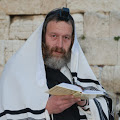Symbolic Amulets Mystical Protection and Power from Kabbalah
 Rabbi David Azulai
Rabbi David Azulai
Amulets Types, Kabbalah - Kabbalistic Comments (1)
A Deep Dive into Mystical Protection and Power
Introduction
Kabbalah, a mystical and esoteric tradition within Judaism, has long captivated the minds of scholars, spiritual seekers, and laypeople alike. At its heart, Kabbalah seeks to unravel the mysteries of existence, the divine, and the cosmos. Among its many practices, the use of symbolic amulets has played a significant role in providing spiritual protection, attracting blessings, and bridging the gap between the material and spiritual realms. These amulets, deeply rooted in the symbolism and metaphysics of Kabbalah, are more than mere objects; they are vessels of divine energy and intentions. This article explores the rich history, meanings, and significance of symbolic amulets within Kabbalistic tradition, providing a comprehensive understanding of their role and power in Jewish mysticism.
Origins of Kabbalistic Amulets
Amulets have been used throughout history in various cultures to ward off evil, attract positive energy, and ensure well-being. Within the Jewish tradition, amulets have a particular place, often drawing on both biblical texts and mystical teachings. Kabbalah, emerging from the medieval period, gave amulets new life by infusing them with layers of spiritual meaning and divine connections.
In Kabbalah, amulets (or kame’ot in Hebrew) often incorporate sacred names of God, angels, and other spiritual forces. The use of Hebrew letters, geometric symbols, and holy scriptures on these amulets is not accidental. The Hebrew alphabet itself is believed to have mystical properties, with each letter corresponding to specific divine energies and powers. By arranging letters in certain combinations, Kabbalists believe they can tap into these energies for protection, healing, or guidance.
Symbolism in Kabbalistic Amulets
At the heart of Kabbalistic amulets is the belief in the power of symbolism. Symbols in Kabbalah are not merely representations; they are dynamic forces that can influence the physical and spiritual worlds. Several symbols commonly appear in Kabbalistic amulets, each with deep metaphysical meanings.
The Tree of Life (Etz Chaim)
The Tree of Life is one of the most profound and central symbols in Kabbalah. It represents the structure of the universe, divided into ten sefirot, or emanations of divine energy. The Tree serves as a map of spiritual ascent and descent, illustrating how divine energy flows from the highest realms into the material world.
Kabbalistic amulets often feature representations of the Tree of Life, either through its entire structure or specific sefirot that the wearer seeks to draw upon. For example, Keter (Crown) represents divine will, while Tiferet (Beauty) represents balance and harmony. By focusing on particular sefirot, Kabbalists believe they can channel divine attributes into their lives.
The Star of David (Magen David)
While the Star of David is often associated with Jewish identity in general, in Kabbalistic terms, it holds deeper meanings. The six points of the star can be seen as representing the six directions of space—north, south, east, west, up, and down—encapsulating the entirety of creation. At the center of these directions lies the divine essence, which transcends time and space.
Kabbalists also interpret the Star of David as a symbol of the union between the physical and spiritual realms, with the upward-pointing triangle symbolizing the ascent of the soul towards God and the downward-pointing triangle representing the descent of divine energy into the world. As an amulet, the Star of David is used to invoke protection and balance, aligning the wearer with cosmic harmony.
The Hamsa (Hand of God)
The Hamsa, a hand-shaped amulet, is a popular protective symbol in both Jewish and Middle Eastern traditions. In Kabbalah, the five fingers of the Hamsa are often associated with the five levels of the soul or the five books of the Torah. The eye in the center of the Hamsa, often depicted on amulets, is a powerful symbol of divine providence, warding off the “evil eye” and negative energies.
The Hamsa is a reminder of God’s watchful presence and protection over the individual. By wearing or displaying the Hamsa, one seeks to create a spiritual barrier against harm and malevolent forces.
Hebrew Letters and Divine Names
One of the most distinctive features of Kabbalistic amulets is the use of Hebrew letters and divine names. Kabbalists believe that the Hebrew alphabet carries sacred vibrations, each letter acting as a vessel for divine power. Specific combinations of letters, often representing the names of God, angels, or other spiritual forces, are inscribed on amulets to invoke their protection and guidance.
For example, one of the most commonly used names is the Tetragrammaton (YHVH), the ineffable four-letter name of God. Other names, such as El Shaddai, Adonai, or Ehyeh Asher Ehyeh, are used in specific contexts to draw certain blessings or protections.
The Function of Kabbalistic Amulets
Kabbalistic amulets serve various functions, depending on the intention behind their creation. While protection is perhaps the most common purpose, amulets can also be used to attract prosperity, ensure health, enhance fertility, or aid in spiritual development.
Protection from Negative Forces
One of the primary reasons for wearing or carrying a Kabbalistic amulet is to protect oneself from negative energies, curses, or harmful spiritual forces. In Kabbalistic thought, the material world is filled with both positive and negative forces. Amulets are believed to shield the wearer from these negative influences by aligning them with divine protection.
The combination of sacred symbols, letters, and prayers on an amulet creates a spiritual “armor” that deflects harmful energies. For example, the Ana Bekoach prayer, a mystical incantation composed of seven lines corresponding to the seven days of creation, is often inscribed on amulets for protection and strength.
Attraction of Blessings
In addition to protection, Kabbalistic amulets are also used to attract positive energies and blessings into one’s life. Whether it’s wealth, love, health, or success, amulets are seen as tools to open spiritual channels for the flow of divine abundance. The use of specific symbols or names in an amulet can focus the wearer’s intention towards particular outcomes.
For instance, the combination of the letters Samech, Aleph, and Lamed is often used on amulets for success and prosperity. The careful arrangement of these letters is thought to create an energetic pattern that resonates with the forces of abundance in the universe.
Spiritual Growth and Insight
Some Kabbalistic amulets are designed to aid the wearer in their spiritual journey, helping them gain insight, wisdom, or deeper connection to the divine. These amulets often feature symbols or phrases related to higher consciousness, such as the Chai symbol (representing life) or the Menorah (representing divine light).
In Kabbalah, spiritual ascent is a central theme, and amulets can be a tool to facilitate this process. By wearing an amulet that aligns with the energies of wisdom or spiritual awakening, the wearer may find themselves more attuned to higher truths or more capable of navigating their spiritual path.
The Creation and Empowerment of Kabbalistic Amulets
The creation of a Kabbalistic amulet is not a simple task. It often involves precise knowledge of Kabbalistic teachings, sacred geometry, and the mystical properties of Hebrew letters and divine names. Traditionally, only those well-versed in Kabbalistic lore, such as Kabbalists or rabbis, could create effective amulets.
The process begins with an intention or purpose. The creator of the amulet must have a clear understanding of the desired outcome, whether it is protection, healing, or spiritual growth. Once the intention is set, the appropriate symbols, names, and inscriptions are selected.
The materials used for the amulet also hold significance. Certain metals, such as silver or gold, are preferred for their spiritual properties, while parchment or leather may be used for inscriptions. Once the amulet is physically created, it is often empowered through prayer, meditation, and specific rituals designed to infuse the object with divine energy.
Kabbalistic Amulets in Contemporary Practice
While Kabbalistic amulets have ancient roots, they remain a popular spiritual tool in modern times. Many people, both Jewish and non-Jewish, seek out these amulets for protection, luck, and spiritual guidance. The rise of interest in Kabbalah, especially in the late 20th and early 21st centuries, has contributed to a resurgence in the use and creation of these mystical objects.
In contemporary practice, amulets are often mass-produced and sold in shops or online. However, for those seeking true Kabbalistic protection or guidance, it is important to ensure that the amulet has been created with genuine spiritual intention and understanding.
Conclusion
Symbolic amulets from Kabbalah are more than just ornamental objects; they are powerful tools that connect the wearer with divine energies, offering protection, guidance, and blessings. Rooted in the mystical traditions of Kabbalah, these amulets draw upon sacred symbols, Hebrew letters, and divine names to create a bridge
admin @ June 17, 2010
Order Protection Talisman Now

